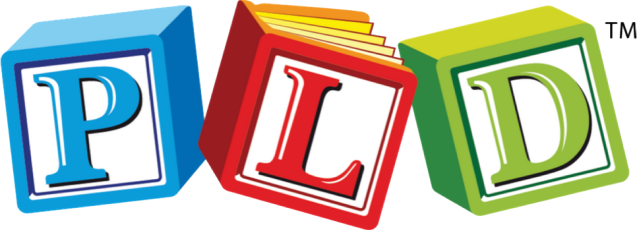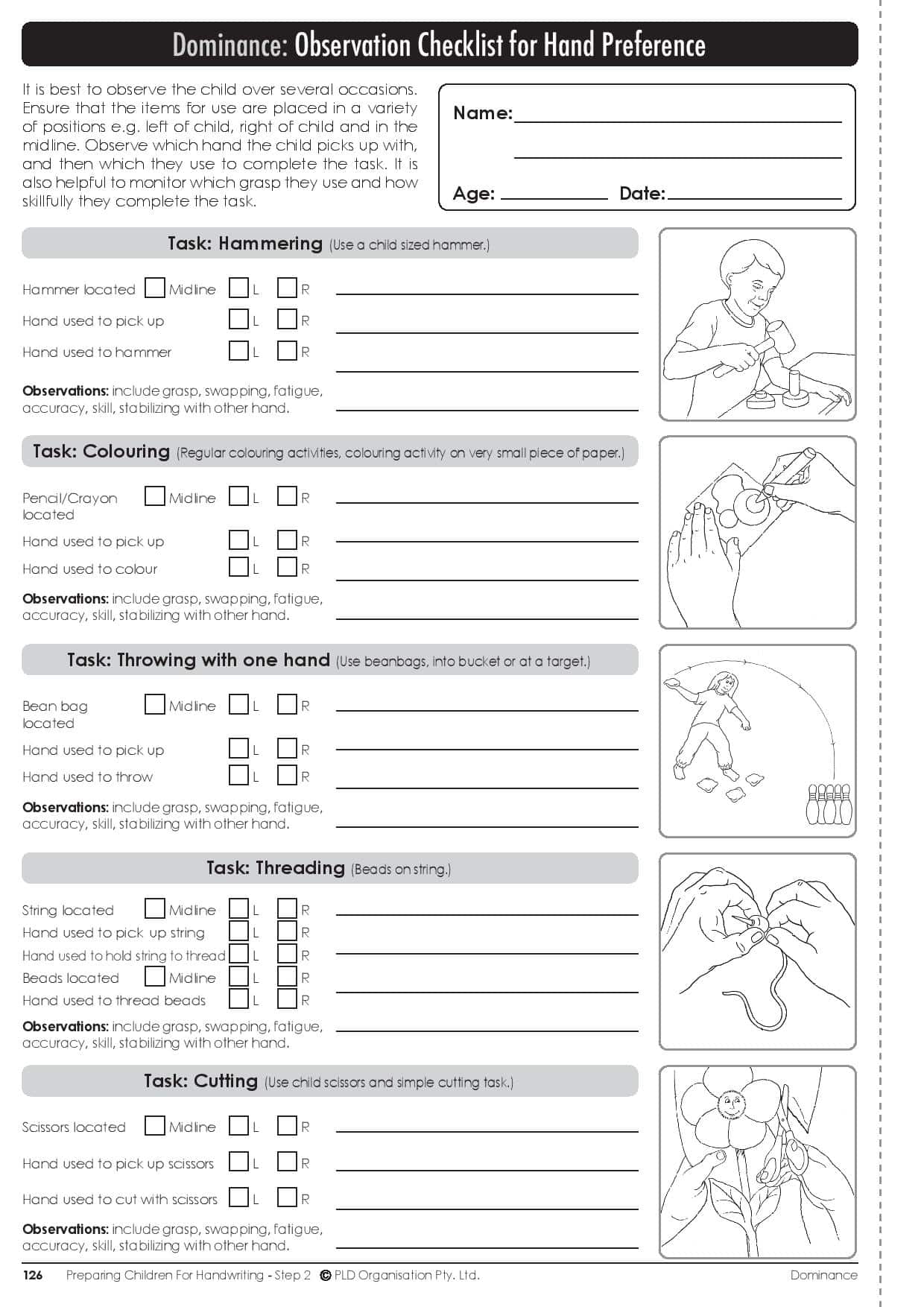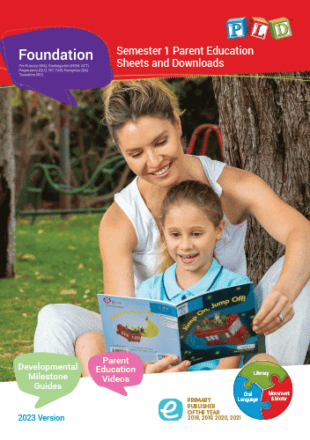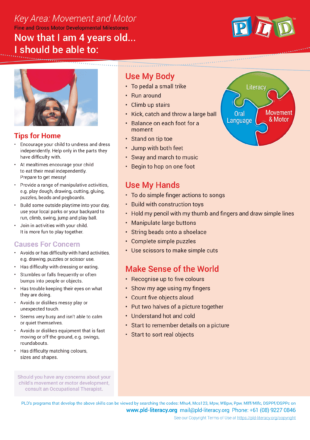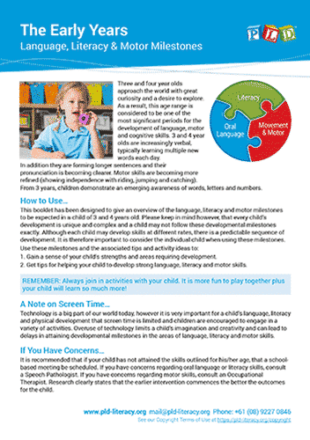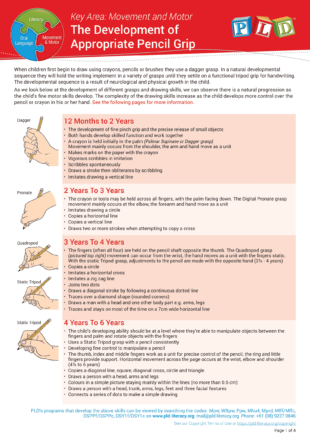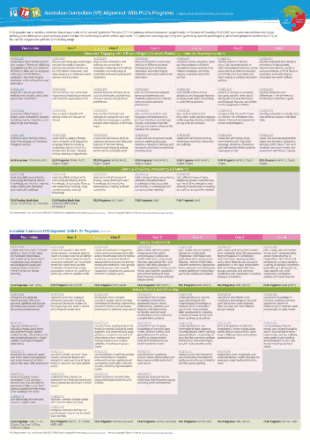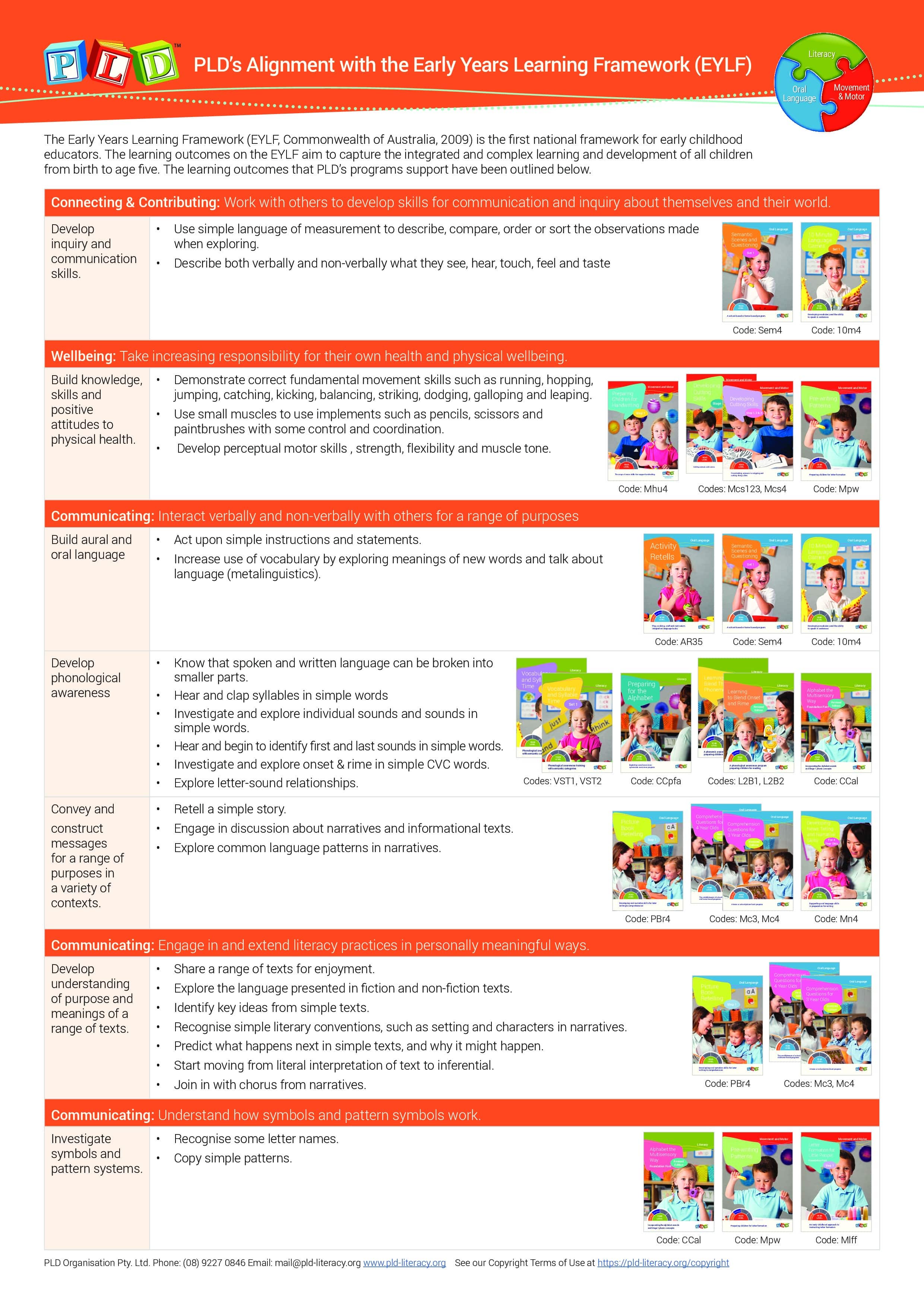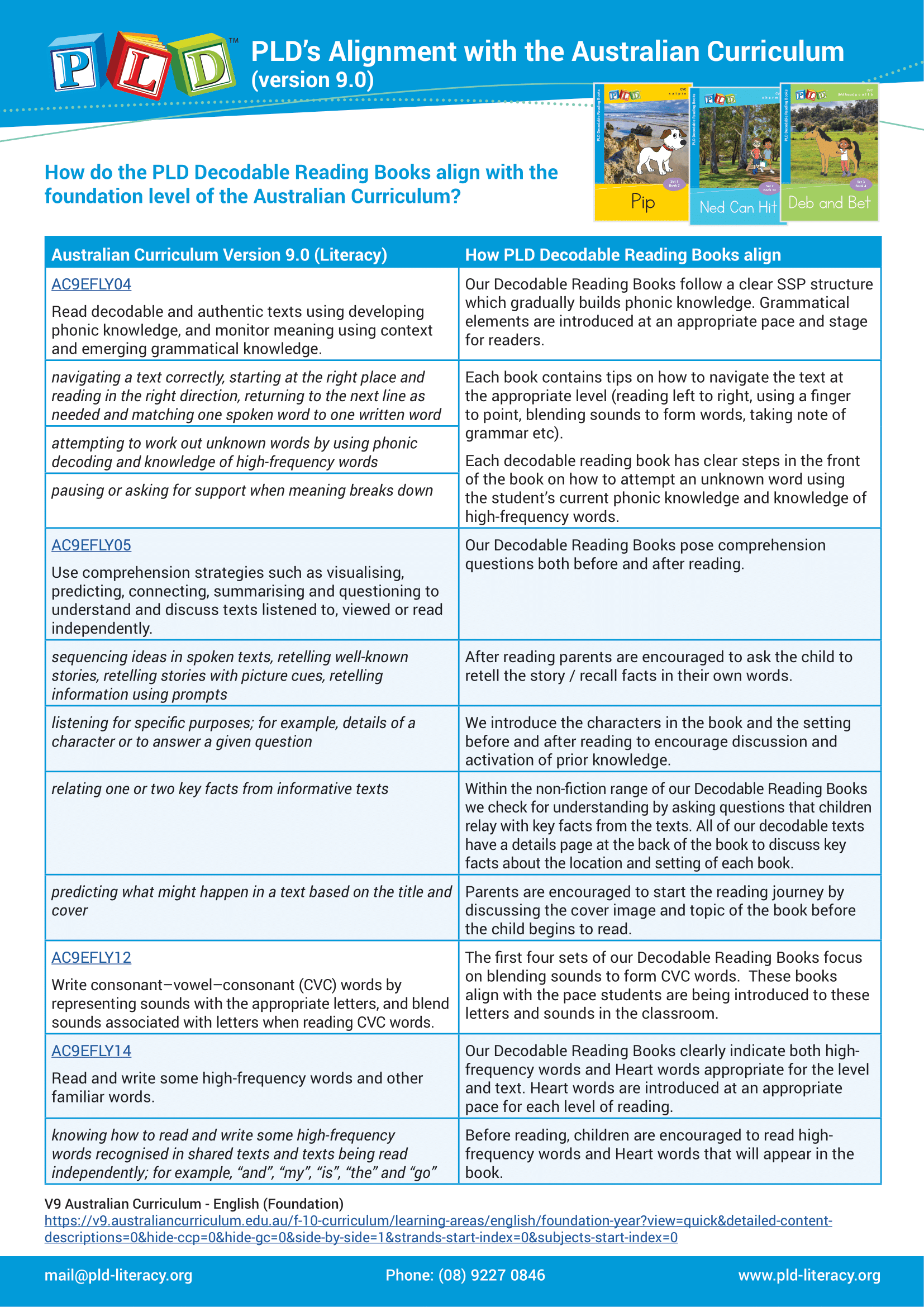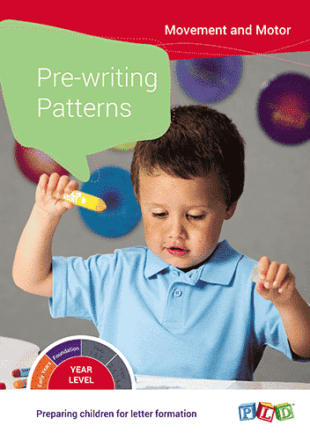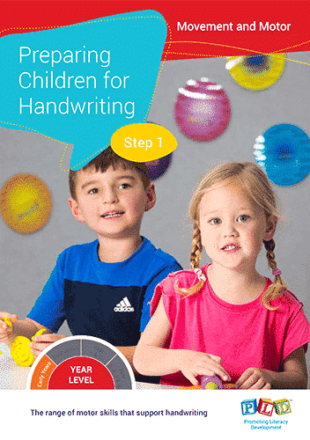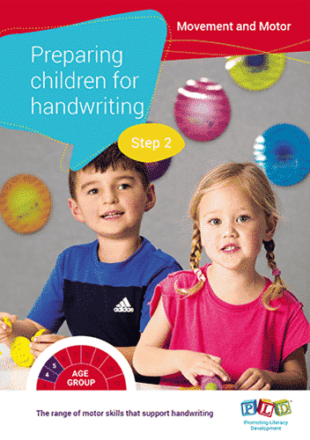-
Foundation Parent Education Sheets and Downloads – Semester 1
This booklet outlines key information to be provided to parents, caregivers and the wider community within semester one. Children benefit when home and school work together. To support this, PLD offers an extensive range of parent milestone information sheets and videos. These resources are ideal to be disseminated to parents and the wider community through […]
This booklet outlines key information to be provided to parents, caregivers and the wider community within semester one. Children benefit when home and school work
-
Fine and Gross Motor Developmental Milestones – 4 years old
This fine and gross motor development milestone poster/sheet for 4 and 5 year old children outlines tips for home and causes for concern.
Designed by Occupational Therapists this resource promotes awareness of early motor developmental milestones. The sheet outlines: What children be able to do with their body. Tips
-
Private: Early Years Language, Literacy & Motor Developmental Milestones
A booklet that provides an overview of Oral Language, Literacy and Motor for children in the early years (3 and 4 year olds). Tips for home and causes for concern are also outlined. The booklet can be photocopied back to back and then folded in half to provide a compact reference.
Three and four year olds approach the world with great curiosity and a desire to explore. As a result, this age range is considered to
-
The Development of Appropriate Pencil Grip & Drawing Skills – 1 to 6 Years Old
These milestone and information sheets identify the age-related milestones for hand function, pencil grip (grasp) and drawing skills in children aged 1 to 6 years. They present images of good and NOT good pencil grip and also outline hints for making a good pencil grip easier.
When children first begin to draw using crayons, pencils or brushes they use a dagger grasp. In a natural developmental sequence, they will hold the
Observation Checklist for Hand Preference
Help your students establish a dominant hand.
Research suggests that the majority of children show a hand preference by 3 years of age, however, some children actually establish dominance as late as 8 or 9 years old. Making a preference is important as it allows the child to develop skill and endurance with that hand.
If a child has not yet made a preference by the Foundation Year, it is suggested that the child is encouraged to participate in activities that involve:
- crossing the midline
- activities using both hands together
- activities were both are active and others where one hand does the work and the other helps
If you would like to help your students establish a dominant hand, download this handy checklist or read additional tips here on our blog: https://pld-literacy.org/product/observation-checklist-for-hand-preference/
See our Copyright Terms of Use at https://pld-literacy.org/help-pages/copyright-policy/
Books: PLD’s books may only be used by the Authorised Purchaser, and the Authorised Purchaser’s students, and only in conjunction with classes taken by the Authorised Purchaser. PLD’s books may be photocopied up to 10% per year for use only by the Authorised Purchaser. The Authorised Purchaser is defined as the original purchaser of the PLD materials.
eBooks: PLD’s eBooks may only be used by the Authorised Purchaser, and the Authorised Purchaser’s students, and only in conjunction with classes taken by the Authorised Purchaser. The Authorised Purchaser is defined as the original purchaser of the PLD eBook. Under the ‘Statutory Educational Licence’ the authorised purchaser can:
- View the eBook as a whole or in part
- Copy the eBook to their personal drive or locally on their device
- Display the eBook on your Interactive Whiteboard, projector or smart TV, for the purpose of teaching the students in their own classroom
- Photocopy or print up to 10% of the eBook per year, for use with the students in their classroom(s).
For copyright purposes, every page of the PLD eBooks will be stamped with the name & email address provided by the purchaser at the time of order. PLD ebooks belong solely to the purchaser and may not be shared with colleagues, parents or anyone else. PLD eBooks must not be uploaded to school servers, intranets or online platforms. Schools wishing to licence PLD eBooks can contact us HERE.
School Licences: A School Licence is a multi-user subscription to a PLD resource, such as a book or program, in a digital and printable format that is accessible via the ‘My Subscription’ section of the PLD website. A School Licence is valid for 12 months from the date of purchase and can be used by an unlimited number of teachers within a school. When bought under a School Licence:
- Resources are accessible in digital, flipbook format, which teachers can access from anywhere, at any time, on any device via the PLD website.
- The resources can be used by any amount of teachers in that school.
- Multiple teachers can access the resources simultaneously.
- The resource is available to print, subject to the standard 10% per year limitation as per Australian Copyright law.
- Updated versions of resources will be automatically accessible to users with a current licence for free, ensuring all users have access to the latest versions of resources.
- Resources are stored centrally and accessed via a secure login account on the PLD website. Thus, all currently subscription resources are accessible in the one convenient place, making resources extremely easy to find. Moreso, the school licence offering eradicates the frustration of lost or misplaced resources and programs which happens often with hardback books.
Additional information can be accessed via the following links:
Books: https://support.pld-literacy.org/en-au/article/plds-printed-electronic-materials-how-can-they-be-used-can-i-share-them-with-a-friendcolleague-9lk4y/
eBooks: https://support.pld-literacy.org/en-au/article/the-pld-ebooks-how-can-they-be-used-what-is-the-copyright-policy-ptfya8/
PLD’s Copyright Policy: https://support.pld-literacy.org/en-au/article/copyright-and-terms-of-use-of-pld-literacy-15tkcer/

